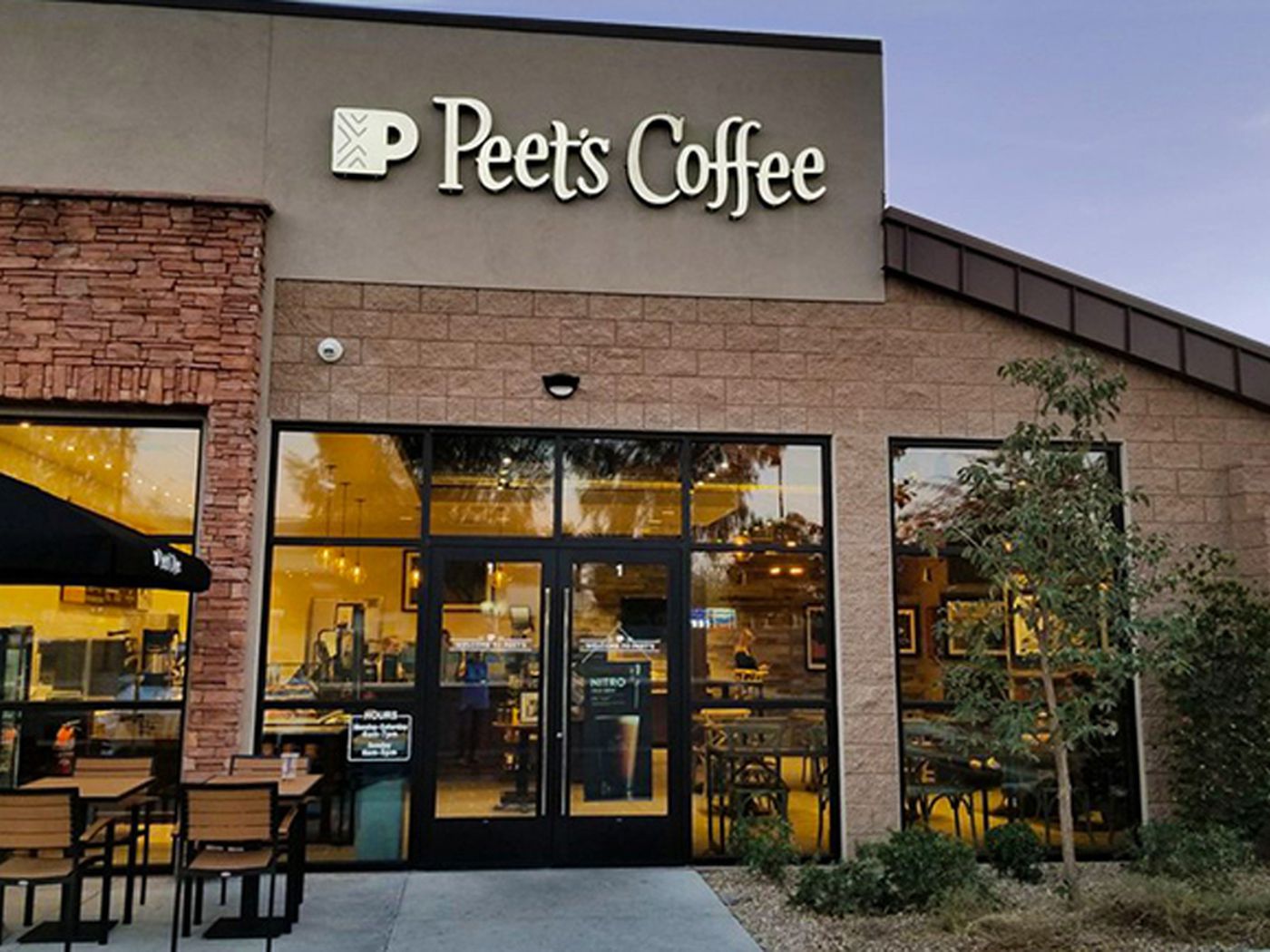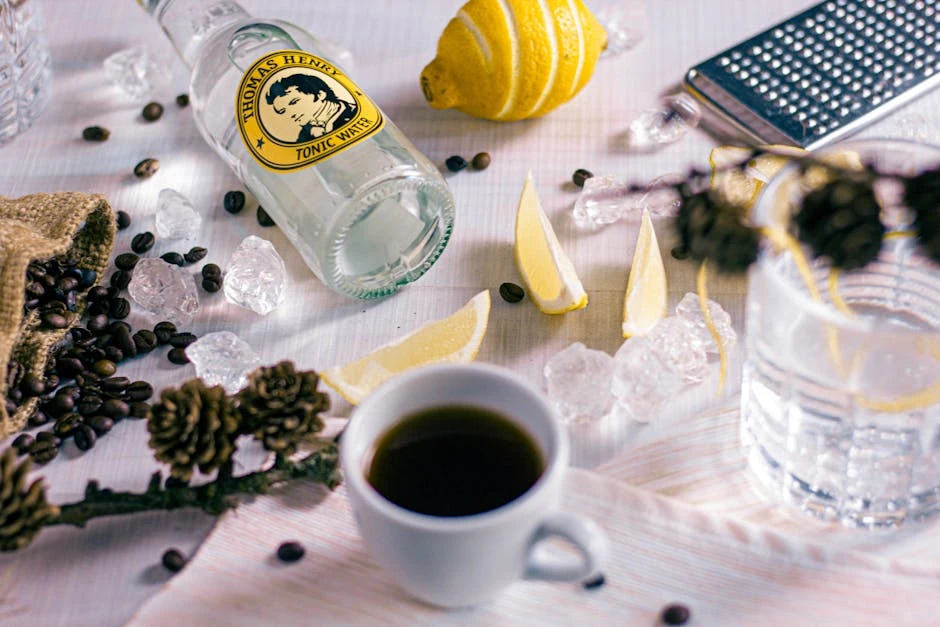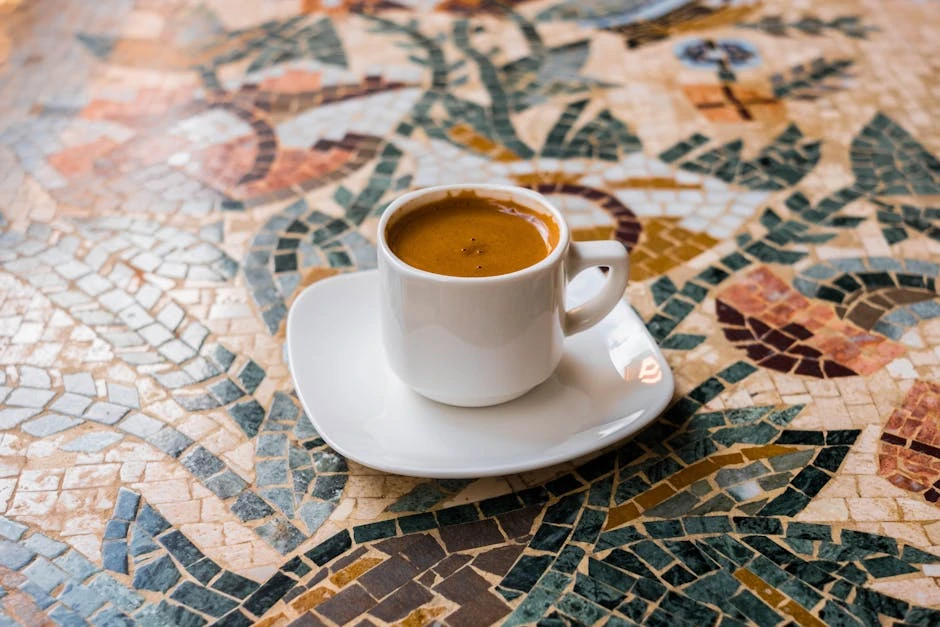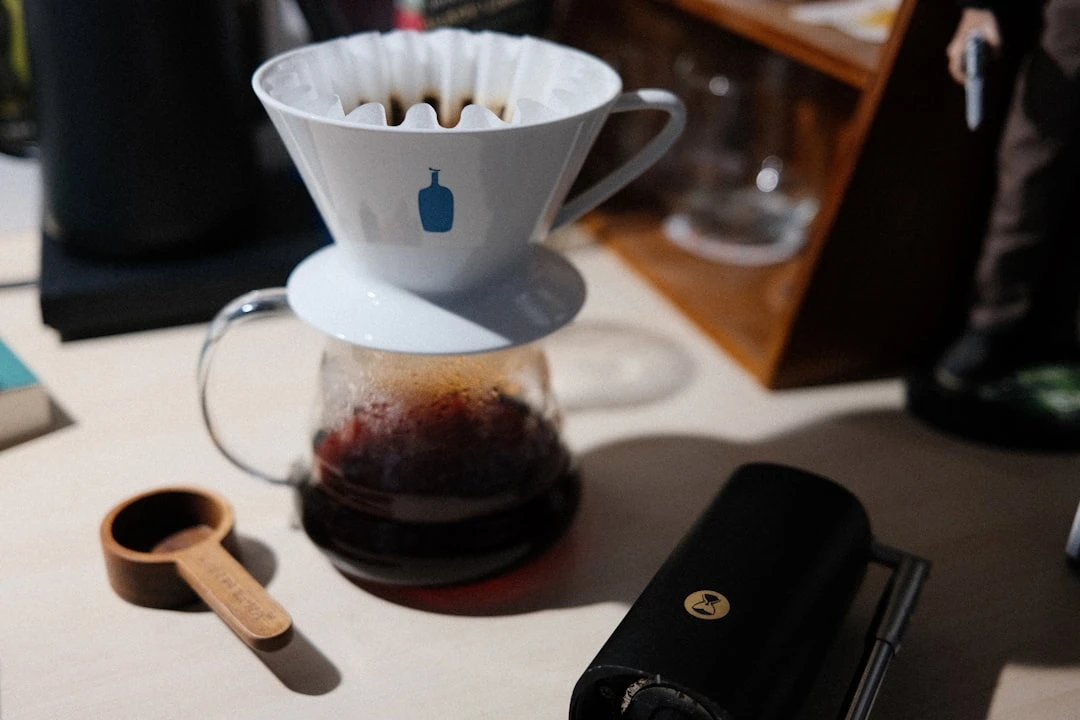The Rich History of Peet's Coffee: From Berkeley to National Fame

What is Peet's Coffee?
Oh, it’s all about that deep, punchy flavor—the kind that wakes you up proper. Back in ’66, this Dutch guy, Alfred Peet, rolled into Berkeley with a mission. America was drowning in watery, forgettable coffee, and he wasn’t having it. So he brought over those dark, smoky European roasts, and just like that, the game changed.
Funny thing—people called him the "grandfather of specialty coffee," and honestly? He earned it. That little shop on Vine Street? It wasn’t much at first, but word got around. Folks couldn’t get enough of his beans—fresh, full-bodied, nothing like the bland stuff everyone else was sipping. Oh, and here’s a twist: he taught the Starbucks founders the ropes. Yeah, that whole movement? Peet’s fingerprints are all over it.
Now? They’re everywhere, but somehow still feel like that neighborhood spot. Single-origin, cold brews, you name it—they’ve got it. And they’re not cutting corners, either. Small batches, fair trade, the works.
At the end of the day, Peet’s isn’t just coffee. It’s a legacy—one part tradition, one part bold new ideas, and zero apologies for packing a flavor that sticks with you.
The Origins: Alfred Peet and His Vision
Alfred Peet—y’know, the guy behind Peet’s Coffee—wasn’t just some businessman. He was a Dutchman with coffee in his blood. Born in 1920 in Alkmaar, he grew up breathing in the rich, smoky scent of his father’s roastery. That’s where he learned—really learned—what good coffee should taste like. After years working in Europe and Indonesia, trading beans and leaves, he landed in the U.S. in ’55. And man, was he disappointed. The coffee here? Watery. Lifeless. Offensive, if you asked him.
So in ’66, he did something about it. Just a little shop in Berkeley, nothing fancy. But the coffee? Damn. Peet wasn’t here to play nice with the mass-produced stuff. He hunted down the best Arabica beans, roasted ‘em dark and deep, the way they did back home. No shortcuts, no compromises. And people noticed. Coffee lovers, purists—even a few wide-eyed kids who’d later go on to build Starbucks. Yeah, Peet’s fingerprints are all over that one.
The guy was relentless. He didn’t just sell coffee; he infected America with his obsession. And even now, decades later, Peet’s still runs on his rules: roast it right, source it fair, never settle. All because some stubborn Dutchman looked at a cup of weak joe and said, ”Nope. We can do better.”
Founding of Peet's Coffee
Back in ’66, a Dutch guy named Alfred Peet opened a little coffee shop in Berkeley—and honestly, America’s coffee scene hasn’t been the same since. Peet grew up around his dad’s roastery in the Netherlands, so he knew his stuff. When he landed in the U.S., he took one sip of the weak, mass-produced coffee everyone was drinking and basically went, "Nope. We can do better."
That first shop, crammed into a corner on Walnut and Vine, was no frills—just Peet roasting small batches of high-quality beans by hand. His dark, smoky blends (looking at you, "Major Dickason’s") were a wake-up call for folks used to sad, pre-ground coffee. People noticed.
Here’s the kicker: Three regulars—Jerry, Zev, and Gordon—loved Peet’s stuff so much they eventually started their own coffee company. You might’ve heard of it. Starbucks. But before all that, Peet’s was the spot, the tiny shop where coffee geeks flocked, and where America’s obsession with good coffee really took off.
Alfred didn’t just sell beans—he rewrote the rules. And that original shop? Still there, still roasting, still proof that one stubborn guy with a passion can change everything.
Early Years: Building a Coffee Culture
Alfred Peet wasn’t just opening a coffee shop in 1966—he was starting a quiet rebellion. A Dutchman in Berkeley, he took one look at America’s sad, watery coffee and decided to change it. Dark, smoky roasts? Small batches? Freshness that actually mattered? People didn’t know what hit them.
Growing up in his father’s coffee trade in the Netherlands, Peet had beans in his blood. He’d chased them across continents before landing in the U.S., where the coffee scene left him baffled. So he did it himself—handpicking beans, roasting them with a precision that bordered on obsession. His tiny shop, Peet’s Coffee, Tea & Spices, became this unassuming hub where professors and hippies alike lined up for cups of something they’d never experienced before.
But here’s the thing—Peet didn’t just serve coffee. He held impromptu classes right there at the counter, pulling back the curtain on roasting times, bean origins, the whole ritual of it. That passion was contagious. Even the future founders of Starbucks hung around like eager students, soaking up his methods before taking them global.
By the ’70s, Peet’s had quietly rewritten the rules. Turns out, Americans did care about flavor—they just needed someone to show them how good it could be. Alfred’s stubborn devotion to quality didn’t just build a brand; it sparked a movement. Every artisan roaster today? They’re standing on his shoulders.
The Peet's Coffee Roasting Process
Picture this: 1966, America’s drowning in watery, bland coffee. Then along comes Alfred Peet—this stubborn Dutchman with a fire for real flavor. While everyone else played it safe, he cranked up the heat, roasting beans darker, bolder, like they did back in the old country. Small batches, fierce attention—no shortcuts, no apologies.
Peet wasn’t just roasting beans; he was hunting magic. Scouring the globe for the best, then pushing them further in the roaster than anyone thought wise. That extra time? That’s where the alchemy happened—deep, toasty caramel, aromas that punched through the morning fog. Major Dickason’s? French Roast? They weren’t just blends; they were wake-up calls in a cup.
Big factories pumped out forgettable coffee by the ton. Peet’s? Every batch got a roaster’s hands, their eyes, their instincts. And freshness? Please. They’d bag it and ship it before most beans even cooled off. Supermarket shelves didn’t know what hit ’em.
Word got around. Even the Starbucks guys? Yeah, they took notes. And today? Peet’s still roasts like it’s 1966—because some things, when they’re done right, just don’t need updating.
Expansion Beyond Berkeley
Back in ’66, Alfred Peet opened this little coffee shop in Berkeley—just a humble spot, but man, did people notice. His beans? Roasted fresh, never cut with cheap stuff. You could taste the difference. Word got around, and before long, one shop wasn’t enough. So in the early ‘70s, they popped up another one in Menlo Park. That’s when things really started rolling.
The Bay Area couldn’t get enough. North Beach, Palo Alto—Peet’s kept spreading, but Alfred wasn’t about to let the coffee slip. He roasted every batch himself for years, fussing over the details like it was his first day. Then ‘79 hit, and the reins passed to Sal Bonavita. Guy loved the coffee, knew the brand inside out. He kept Alfred’s standards high but cranked things up a notch—more stores, more reach.
By the ‘80s, Peet’s wasn’t just a West Coast secret. They landed in Boston, Chicago, even started shipping bags to folks who couldn’t swing by a store. Growth? Sure. But never at the cost of quality. Small batches, direct from farmers—no shortcuts.
By the decade’s end? Peet’s wasn’t just another coffee company. They were the standard, proof you could grow big without losing what made you special. Alfred’s obsession? Still right there in every cup.
The Starbucks Connection
You can’t talk about Starbucks without mentioning Peet’s—it’s just part of the story. Back in ’71, when Baldwin, Siegl, and Bowker were piecing Starbucks together, Alfred Peet was the one who showed them how coffee should taste. His dark roasts? Absolute magic. They were converts from day one.
For ages, Starbucks didn’t even roast its own beans—just got ‘em straight from Peet’s. Funny how things twist, though. After selling Starbucks to Schultz, Baldwin and Bowker turned around and bought Peet’s in ’84. Schultz went big, globe-conquering big, while Peet’s? Well, it never lost that small-batch, fanatical-about-quality vibe Alfred built.
Different roads, same family tree. Starbucks owes its early days to those Peet’s runs and late-night roasting lessons. Meanwhile, Peet’s stayed the quiet purist, the one coffee geeks swear by. Even now, there’s that thread between them—proof that one guy’s stubborn love for a perfect roast can ripple through decades.
Peet's Coffee in the 1990s
The ‘90s? Yeah, that was Peet’s moment of truth. Alfred Peet had lit the fire back in ‘66, and the regulars—oh, they were devoted. But suddenly, coffee wasn’t just coffee anymore. Chains sprouted up overnight, and Starbucks? Well, let’s just say they took notes from Peet’s playbook and ran with them—straight into every shopping mall in America.
Peet’s could’ve panicked, tried to keep up. But that wasn’t their style. Small batches. Beans with pedigree. No half-measures. They expanded, sure, but slowly—staying close to home, keeping the Bay Area as their heartland. No reckless sprawl, no watering things down.
Clever moves helped. Mail-order? Genius. Suddenly, some guy in Ohio could get his hands on a bag of Major Dickason’s without hopping a flight. And the baristas? They weren’t just pushing buttons. They knew coffee, down to the last crack of the roast.
Plenty of places cut corners chasing trends. Peet’s? They doubled down. Dark, rich, serious coffee—the kind that didn’t apologize. And the regulars? They never left. By the time the decade flipped, Peet’s wasn’t the biggest name in the game. But it was still the one that meant something. Just like Alfred intended.
Acquisition by JAB Holding Company
2012 was the year everything shifted for Peet’s Coffee. That’s when JAB Holding Company—this Luxembourg-based powerhouse with a taste for premium coffee brands—decided to make their move. Overnight, Peet’s wasn’t just the Berkeley underdog anymore. They had the backing to really shake up the specialty coffee world.
And shake it up they did. Suddenly, Peet’s was rubbing shoulders with Caribou, Stumptown, Intelligentsia—all under JAB’s roof. More stores, a stronger online presence, and let’s be honest, way more people discovering just how good Major Dickason’s blend could be. But here’s the thing: they never lost that craft-roaster heart.
Alfred Peet’s spirit stuck around. Those signature dark roasts? Still front and center. But now there was room to play, too—single-origin experiments, a surprise collab with Starbucks for ready-to-drink options. Who saw that coming?
JAB didn’t just give Peet’s money. They gave it legs. Suddenly, this heritage brand wasn’t just surviving—it was out there competing, innovating, making sure folks remembered why Peet’s mattered in the first place. Same soul, just… louder.
Peet's Coffee Today
Just a single corner shop in Berkeley, you know? Fast forward to today, and they’re almost everywhere. Over 300 spots dotting the map, mostly in California but creeping into places like Chicago, Boston, D.C. Sure, Starbucks and Dunkin’ might be on every other block, but Peet’s? Different vibe. Smaller batches, better beans, that sort of thing.
Then there’s JDE Peet’s
The big umbrella they fell under after the 2019 merger. That move? Game changer. Now you don’t even need to step into a café to get your fix—grab a bag at the grocery store, order online, even sign up for a subscription. And those canned cold brews? Suddenly they’re everywhere, plus they’ve got these sneaky little partnerships that keep popping up.
Peet’s isn’t the biggest
And honestly? That’s part of the appeal. It’s for the folks who geek out over roast profiles and sourcing, who actually care if their coffee’s sustainable. Exact market share? Tough to say, but in the fancy-coffee club, they’ve still got clout.
The whole coffee world’s a moving target, but Peet’s? They’re managing to stay Peet’s—keeping that old-school craft alive while playing the modern game. Tricky, but they’re pulling it off. For now, anyway.
Product Line Evolution
In 1966, Alfred Peet was just a guy in Berkeley, burning the midnight oil over his roaster, pulling out these dark, intense beans nobody had tasted before. People went nuts for it. By the ‘70s, cafes everywhere were begging for his stuff—even some upstart called Starbucks took notes.
Peet’s never lost that obsession for quality, but it wasn’t stuck in the past. First came pre-ground bags, then mail-order subscriptions—because not everyone wants to play barista at home. Then, K-Cups happened. Love ‘em or hate ‘em, they kept Peet’s in the game when convenience became king.
But the real leap? Bottled cold brew, iced lattes, espresso shots you can chug on the run. Partnering with giants like Starbucks and Nestlé meant suddenly, Peet’s wasn’t just for purists with pour-overs. It was for anyone who needed a caffeine hit, fast.
Today? Take your pick—whole beans, pods, grab-and-go bottles. Through every shift, that signature rich, smoky flavor stuck around. Not too shabby for a little shop that just wanted to roast coffee right.
Sustainability and Ethical Sourcing at Peet's Coffee
They’ve never been about shortcuts. Back in ’66, Alfred Peet had this wild idea—what if coffee didn’t have to come at someone else’s expense? Turns out, when you treat farmers right and tend the land with care, you get something pretty magical in your cup.
These folks don’t just shake hands and sign contracts. They’re out there—knees dirty, boots muddy—working alongside growers season after season. Sure, Fair Trade and Rainforest Alliance certifications matter (and they’ve got ‘em), but Peet’s plays the long game. Teaching farmers how to coax more flavor from fewer resources, how to let the land breathe between harvests.
And the planet? They’re not perfect, but hell—they’re trying. Those shiny new roasters sip energy instead of gulping it. Those pod things everyone loves to hate? Now they’ll melt back into the earth where they belong. They’re even planting trees where coffee grows, because turns out, shade-grown beans taste better anyway.
But here’s the thing—it’s never just about beans. It’s about the kid in Guatemala who can finally read because Coffee Trust built a school. The midwife who now has clean gloves thanks to a Peet’s-funded clinic.
Alfred’s ghost probably still wanders those Berkeley roasteries, muttering about quality. Funny how doing right by people and soil somehow makes the coffee taste... well, alive.
Peet's Coffee vs. Competitors
You ever sip a cup of Peet’s and just know it’s different? It’s not about flash or gimmicks—just coffee done right. While everyone else jumps on the light-roast bandwagon or drowns their drinks in syrup, Peet’s stays stubbornly, unapologetically itself. Small batches. Hands-on roasting. Flavors so deep you can almost taste the care in every sip.
Alfred Peet started this back in ’66—before "craft coffee" was a buzzword, before anyone cared about sourcing. He dragged European-style dark roasts across the Atlantic and basically rewrote the rules. And Starbucks? Yeah, they owe him one. But while they went global with frappuccinos and pumpkin spice, Peet’s kept roasting like it mattered. Because it does.
Ever tasted grocery-store coffee after drinking Peet’s? It’s like comparing a faded photocopy to the real thing. Those pre-ground, dusty bags? Not here. Whole beans only—because flavor’s fragile, and Peet’s refuses to let it die in some warehouse.
And the beans? Big chains toss whatever’s cheap into the mix. Peet’s hunts down single-origin gems, works directly with farmers—long before fair trade stickers were a marketing ploy. That Major Dickason’s Blend didn’t stick around since ’69 by accident.
In a world of drive-thru caffeine fixes and Instagram-ready drinks, Peet’s is for the purists. The ones who want coffee that tastes like coffee. Alfred’s legacy? Still simmering in every cup.
Notable Collaborations and Partnerships
Peet’s has never been just about the beans—it’s about who you share them with. Take Starbucks. Yeah, funny story—back in ’71, those now-famous founders bought their first green coffee from Alfred Peet himself. He schooled them on roasting, but Peet’s always marched to its own drum, darker and richer.
Then JAB Holding came knocking in 2012. That deal? Game-changer. Suddenly Peet’s had room to stretch, snagging Stumptown and Intelligentsia soon after. Because why play small when you can rewrite the rules?
Walk into any Whole Foods and there they are—those unmistakable bags. Grocery aisles turned into Peet’s turf, no barista needed. And that Nespresso collab? Pure hustle. By 2016, they were in homes, going sip-for-sip with the big guys.
Now you’ll find ’em in the cold brew section too, thanks to Coca-Cola. But here’s the thing—every handshake, from indie roasters to corporate heavyweights, keeps the coffee bold and the story real. No gimmicks. Just that Peet’s soul in every cup.
The Future of Peet's Coffee
Peet’s isn’t just resting on its legacy—it’s mixing that old-world coffee magic with what drinkers crave today. Sustainability, bold new flavors, a little tech wizardry… yeah, they’re playing the long game.
About that green push. They’ve already got ethical sourcing down, cutting waste where they can. But next? Lighter packaging, roasting that doesn’t cost the planet, maybe even tighter bonds with farmers who grow beans the right way.
People want something special now. Not just coffee—experience. Single-origin surprises, cold brews that hit different, maybe a nitro twist here and there. And let’s be real, oat milk and friends aren’t fading. Peet’s knows it.
Tech’s sneaking into your caffeine fix. Order ahead, subscribe, rack up rewards—they’re on it. Bet they’ll lean harder into AI that gets your order before you do, faster pickups, less fuss when you’re shopping online. Gotta keep pace, right?
World domination? Maybe a little. The West Coast’s home, but imagine Peet’s in Tokyo or Berlin. New stores, local roasts tweaked for new crowds… could be a thing.
Truth is, Peet’s isn’t losing its soul. Just making sure tomorrow’s coffee addicts find theirs.
Conclusion
A Dutchman with a fiery passion for the good stuff, he rolled into Berkeley in ’66 and decided weak, factory-made coffee wasn’t gonna cut it. So he opened that first Peet’s, small but mighty, roasting beans in tiny batches, hand-selecting them straight from the source. No compromises. Suddenly, people realized coffee could actually taste like something.
Even the Starbucks founders? Yeah, they were paying attention.
Peet sold the business in ’79, but his fingerprints never faded. The brand grew—shops popping up far beyond California—but never lost that stubborn commitment to doing things right. Ethical sourcing, obsessive quality. These days, they’re playing with cold brews and single-origin experiments, sure, but the soul of the place? Pure Peet.
Here’s the real magic, though: He made coffee matter. Long before "third wave" was a buzzword, Peet was treating each cup like something worth slowing down for. His shadow stretches over every corner of today’s specialty scene—where beans have passports, where roasting’s an art. That’s him.
Gone, but not forgotten. His rule still stands: Start with stellar beans, skip the shortcuts. Peet’s lives by it. And that legacy? Still percolating, strong as ever.


